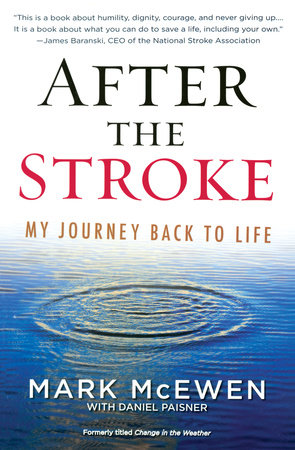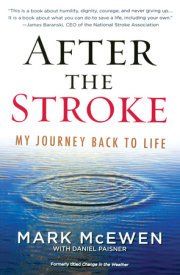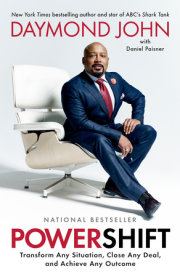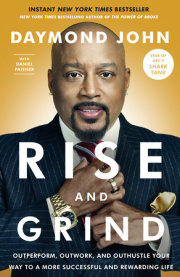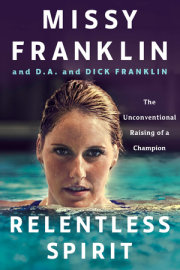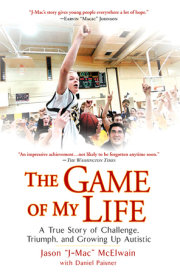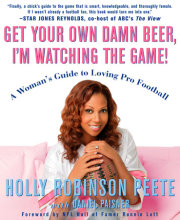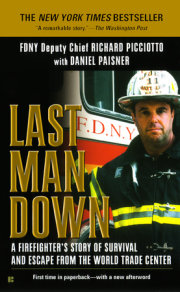1
INTRODUCTION
It Ain’t No Use to Sit and Wonder Why, Babe
This is a book about stroke. Specifically, it’s about amassive stroke I suffered on Tuesday, November 15,2005, on a plane home to Orlando, Florida, fromBaltimore/ Washington International. This massive strokefollowed a smaller stroke two days earlier that left me feelingweak and nauseated. Those symptoms drove me to anemergency room visit at a Baltimore-area hospital, where adoctor misdiagnosed me with the stomach fl u, sent mehome, and told me to get some rest and drink plenty offluids.
It’s also a book about me. People say you should writewhat you know. I know me, and I know stroke. This strikesme as funny, because up until a couple years ago I didn’tknow the first thing about stroke. I didn’t know the secondthing either. To be sure, I knew about me—but you couldhave barely filled a thimble with what I knew about stroke.Now I travel the country giving speeches to stroke survivorsand their caregivers and families. I talk about warningsigns and treatment options and aftercare considerations.Mostly I talk about how I survived my own stroke with thesupport and encouragement of my family and friends andtherapists, but before I get to that happy ending I talk abouthow I naively followed that emergency room doctor’s adviceand did as I was told. I talk about some of the horrorstories I’ve collected along the way, and how misdiagnosisand misinformation seem to play a role in a lot of strokecases. It’s like the opposite of that old maxim, “What youdon’t know can’t hurt you.” With stroke, it’s more like,“What you don’t know can hurt you.” Heck, it can kill you.It nearly killed me.
A lot of the folks I talk to recognize me from television.They see someone they invited into their homes over breakfast,or into their bedrooms as they got dressed for work.They remember the long career I enjoyed at CBS News, firstas a morning show weatherman and later as an entertainmentreporter and eventually as a coanchor. Some of themremember how I spun a pie-in-the-sky, seat-of-the-pantsturn as a stand-up comedian into a viable run as a rock ’n’roll radio disc jockey and then into a long-running gig as anetwork news personality. Of course, they want to hearabout my experience with stroke, that’s the baseline for ourvisit, but they want to hear about it from a familiar face.While we’re at it, they also want to hear about the unlikelycareer I managed to build at CBS; the front-row seat it providedto world events like the Olympic Games, politicalconventions, and Super Bowls; and the lasting friendships ithelped me to forge with people like country music superstarGarth Brooks, singing legend Tony Bennett, my boyhoodidol, Hall of Fame pitcher Bob Gibson, and PresidentGeorge H. W. Bush. Ironically, it was President Bush whosigned the bill designating the month of May as NationalStroke Awareness Month, back in 1989, more than fifteenyears before I could recognize its importance.
It’s all tied together, the life I lived before my stroke andthe life I’m living now, and I believe this is an importantpoint. It reminds people that the lives they lived beforestroke will come back to them in time, and it reinforces thatstroke doesn’t discriminate. It doesn’t care about race orclass or religion. It doesn’t care if you’ve had a long career inmorning television or an anonymous career behind thescenes. It cares only about risk factors like high blood pressureand cholesterol and obesity, and whether or not yousmoke or drink or exercise regularly.
I’ll write more about these risk factors a bit later on inthese pages. For now, let me get back to me for a moment,to help set my rehabilitation and recovery in a kind of context.What a lot of people don’t remember is that when Iworked at CBS I made most of my living in harm’s way. Forfifteen years, I was the guy the producers asked to do thestunts. Before me, network morning shows featured weathermen,like my good friend Willard Scott, who were knownfor dressing in silly or outrageous outfits, or for saying sillyor outrageous things. After me they had to go out and dostuff. And not just any stuff. It had to be exciting, perilousstuff. At first it just had to be silly or outrageous—to matchthe outfits and the outbursts, I guess—but then it had to bestuff any rational person wouldn’t even consider doing.
By the end of my long tenure at CBS, I was probably theonly on-air network news personality with a “reckless endangerment”clause in his contract that actually requiredhim to risk his life. This is a joke, of course, but it’s rootedin truth. I should know, because I was the guy they sentparasailing in ripping winds. (I almost drowned when theyfinally brought me down.) I was the guy they put in the airshow plane, or in the race car, or at the top of the LeaningTower of Pisa for no apparent reason other than it looked alittle thrilling and seemed like a good idea. I was the guywho emerged from a coffin to the music of The Phantom ofthe Opera to open our Halloween show one year. I was theguy they put in a barrel in the middle of a bullring in Jackson,Mississippi, while a rodeo clown baited a not-toohappybull into charging me. (It might as well have beenanother coffin.) I was the guy who rode the runaway dogsledin Lillehammer, Norway, that careened out of control. Iwas Walter Mitty, with protective gear.
Yep, that was me.
I was the guy who stood in as the honorary Longhornsquarterback and took a couple snaps from center for theUniversity of Texas football team. Ricky Williams was afreshman, and on the first play I handed the ball off to him.That was easy enough. On the second play, I hit the widereceiver about fifteen yards downfield with a perfect spiral.Also easy enough.
On the third play, a defensive end named Chris Atkinsbroke through the line and hit me so hard I thought I sawbirds and stars, like in the cartoons. Harry Smith and PaulaZahn were our anchors at the time. They were in an auditoriumon campus, where we had set up a remote studio aspart of our tour of the state of Texas. They were watchingme on the monitors, along with a studio audience comprisingmostly Longhorn fans. They all saw me get hit. I wasmiked, so they all heard me say, “Oooof!” very loud. This,apparently, is what you say, very loud, when you get hit bya three-hundred-pound defensive lineman. “Oooof!” It’snot really a word. It’s not even an exclamation. It’s just thesound you make when all the air leaves your lungs in apainful instant.
This got me on Entertainment Tonight, only not in a goodway. It ran as a kind of blooper. They showed the footage ofChris Atkins tackling me. They played the audio of all thatair leaving my lungs. Then they showed all the other playersjumping on top of me, which I guess was meant to showwhat a rollicking good time they were all having at myexpense. After that, they showed my colleagues in the studio,laughing it up. And finally they showed me, crawlingmy way out from under the pile and staggering to the camera.I took off my helmet and said, “I have a daughter!”
Man, I couldn’t believe that quarterbacks get hit thathard a dozen times a game, and still get up and get back outthere. I was sore for a week. I tried to laugh it off, but ithurt. I left the field telling Chris I would sue him after hewent pro, when he had some real money.
Yep, that was me.
I was up for almost anything, an aspect of headstrongcharacter that would serve me well as I recovered fromstroke, although occasionally I took some convincing.Once, in 1992, at the XVI Winter Olympics in Albertville,France, my producer Kevin Coffey spent a week getting meto agree to be buried in six feet of snow so viewers at homecould watch an avalanche dog try to sniff me out. Kevin andI had worked together for years. He’s one of my closestfriends. He knew my thresholds for pain and indignity anddanger, and I knew his penchant for ratings and “good television”and the kinds of remote stunts that got our viewerstalking, so it was an intense negotiation. He wanted what hewanted, which was to get me to do something outrageous,while I wanted what I wanted, which was to return homefrom Albertville in one piece. Kevin tried to tell me that itwould be a public service, for me to submit to his avalanchedog stunt, to get people to be more careful in the mountains,but I wasn’t buying it. I just thought he wanted tobury me in the snow for the cameras. On the first Mondaywe were in France, he came up to me and asked if I’d agreeto it.
I said, “No way.”
On Tuesday, Kevin pitched the idea to me again. He said,“How would you like to be buried in the snow?” It was as ifwe never had that first conversation. He reminded me thatthese avalanche dogs made life-and-death rescues, and thathighlighting these rescue efforts might be helpful to peoplein avalanche or whiteout situations.
I said, “No way.”
On Wednesday, he came at me again.
Once again I said, “No way.” Only this time Kevin musthave heard something in my voice that made him think Iwas softening. I was tired of saying no, but I wasn’t softening.I had no interest in being buried in all that snow, increating a life-or-death situation for myself that might notturn out to the good.
Copyright © 2009 by Mark Mcewen. All rights reserved. No part of this excerpt may be reproduced or reprinted without permission in writing from the publisher.

